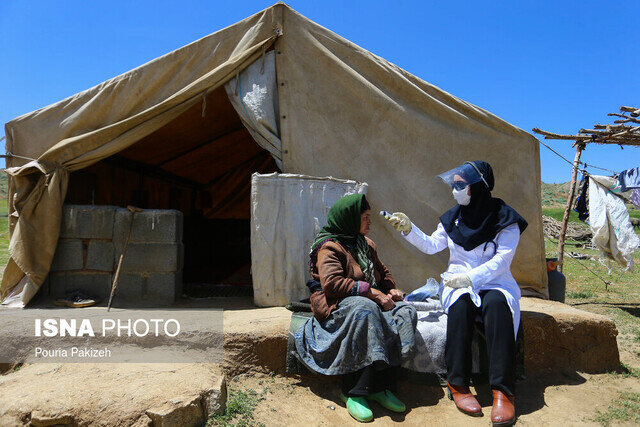Good state of ‘health’ in villages

TEHRAN – In the past 20 years, the health indicators of the rural population have grown significantly, Mostafa Rezaei, head of the primary healthcare network of the Ministry of Health said on the occasion of the National Day of Villages, October 7.
For nearly 20 years, we have been providing first-level services to 29 million people in the form of an insurance program for rural areas and cities with less than 20,000 people. These services include service packages for age groups plus services for vulnerable groups, he explained.
The good situation we have in rural areas compared to urban areas is people's access to PHC services; This means that health care and treatment are provided to all villagers and the rural family physician program has been implemented and pursued for almost 20 years, he stated.
PHC system
Primary health care is provided to rural residents by 31,000 health care providers (called Behvarz) nationwide.
In 1971, a research project was carried out in the northwestern city of Urmia that came up with the idea of setting up a comprehensive healthcare network in both rural and urban areas of the country, similar projects were piloted in the provinces of West Azarbaijan, Shiraz, Tehran, Fars and Lorestan from 1973 to 2020, However, Iran’s health care network was launched in 1981-1983.
Over six years (1984 to 1990), the PHC system was fully developed throughout the country. In rural areas, Health Houses are established in villages with over 300 residents, which are under the supervision of a rural comprehensive health center.
Each health center takes control of five Health Houses.
Two healthcare providers are providing primary care in each health house; including, preventive care, health promotion, screening, and basic medical services for predefined conditions, to an approximate population of 1,100 people.
Currently, 18,000 health centers are providing services to over 20 million villagers nationwide, with 630 health care providers, Rezaei highlighted.
Family Physician program
In 2005, Family Physician (FP) program was started, which targeted almost 25,000,000 citizens residing in rural areas, and was piloted in two provinces of Fars and Mazandaran.
Based on the program, a physician and a midwife offer services in rural areas, every 3,300 villagers have a physician and there is a midwife per 5,200 people in villages.
The plan helped reduce treatment costs and public spending on healthcare services, as the physician is aware of the person’s health background, it prevents many unnecessary diagnostic processes, like scans.
A longstanding challenge, however, remains to be a barrier to the expansion of the FP program into urban settings, where the PHC is undeveloped and fragile as well as the powerful private sector is resistant.
Free insurance and services
“Over the last 20 years, the health indicators of the rural population have grown significantly, and now we no longer have such a problem with most contagious diseases, and with non-communicable diseases, diabetes, high blood pressure, high blood fat, etc.
Some screenings and diagnoses regarding the common cancers of men and women are also offered actively and free of charge to the rural community and cities with less than 20,000 people,” Rezaei also said.
For the adolescent age group, every three years, all adolescents in the first, fourth, seventh, and tenth grades of elementary school receive their special services, including physical and mental health tests, he added.
People living in villages are covered by free insurance and benefit from all service packages without paying, he stated, highlighting that all rural care services are free.
Iran's strong health system
Last October, World Health Organization (WHO) representative to Iran Jaffar Hussain, said that Iran's health system can be a model for other countries in the region, especially in the field of health and the use of valuable forces such as healthcare providers.
They have also played an effective role in improving life expectancy, reducing the death of pregnant women, improving the health status and disease index in the last 40 years, etc.
The World Health Organization believes that the improvement of health indicators in the villages of Iran and the reduction of the gap between the health indicators in rural and urban areas are due to the activity of health care providers.
A similar system is providing primary care in urban and suburban areas by Health Posts with community-based health care workers (called “Moragheb-e-Salamat”), each of whom is tasked with offering services to about 2,500 people, Mohammad Hossein Nicknam, an immunologist, has said.
“There is also an urban comprehensive health center which supervises three Health Posts, he noted, adding that some 5,343 health posts and 2,723 health centers are active across the country, with 24,000 health care practitioners.
Pointing out that 93 percent of the urban residents are covered by the health networks in the country, he said that 3,987 physicians and 1,2032 health care providers (dentists, nurses, midwives, and health professionals in the fields of environmental health, nutrition, mental health, etc.) provide services to 54 million people,” he also explained.
FB/MG
Leave a Comment